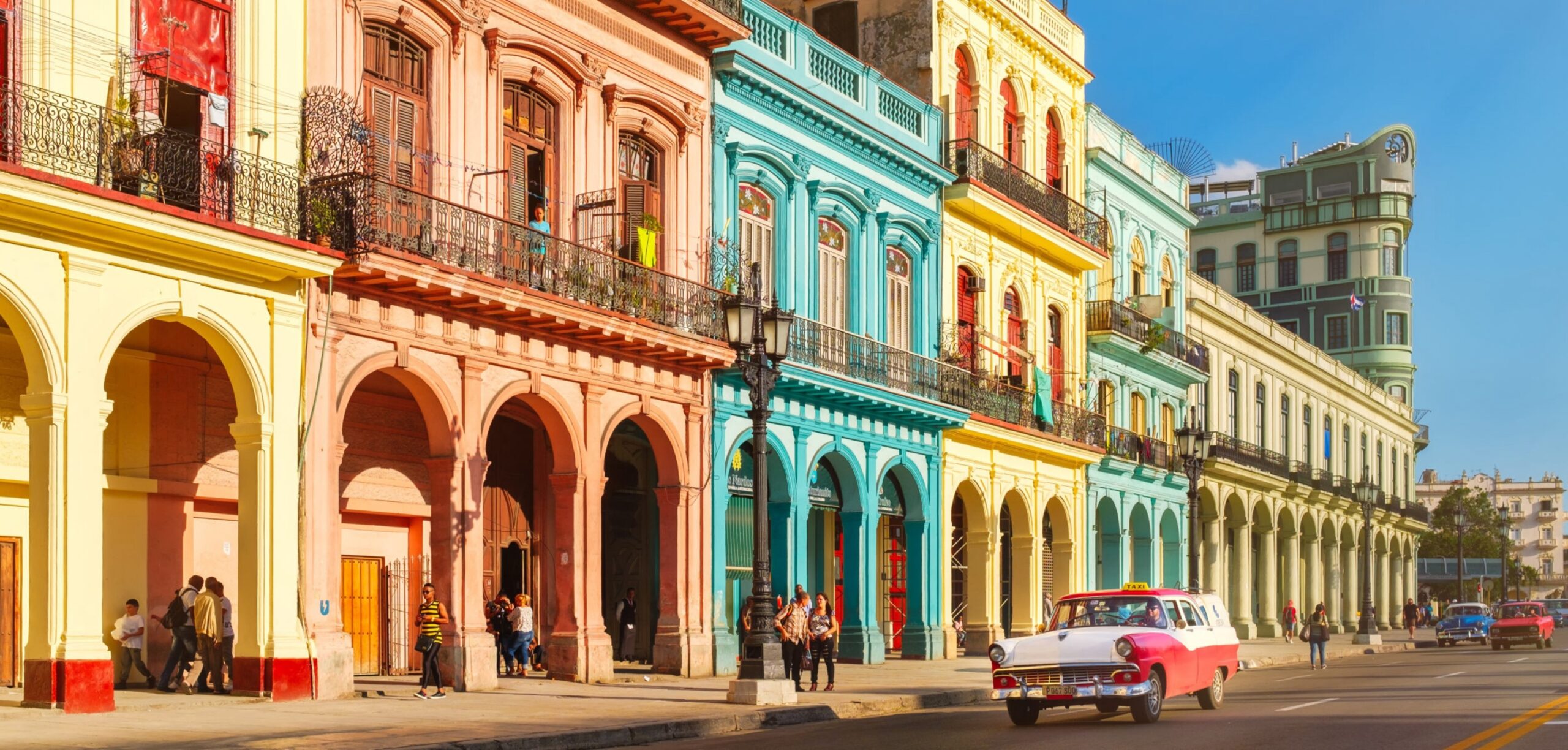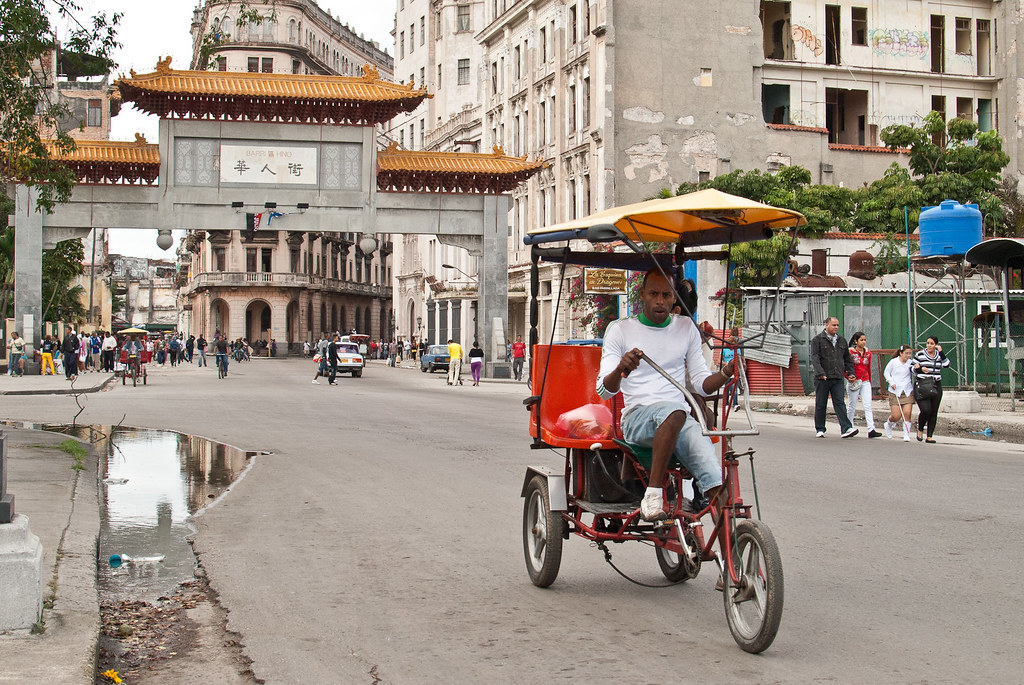Meeting Gregorio Fuentes for the first time was a profound and awe-inspiring experience. At the age of 97, he stood as a living testament to a bygone era, a living connection to the legendary writer Ernest Hemingway.
When we arrived at the La Terraza, Gregorio was sitting near an open window eating a plate of scrambled eggs and toast. He was wearing a baseball cap appropriately inscribed with “Captain” across the front. At first glance, he looked exactly the way I had envisioned him.
His face and hands were etched with the intricate lines of time, a testament to a life at sea and the challenges faced on the open waters. He offered his wrinkled, sun-blotched hand and surprisingly, when he squeezed the strength of his grip confirmed he was a man who spent his life laboring on the vast blue ocean.
“The old man was thin and gaunt with deep wrinkles in the back of his neck,” Hemingway wrote in the opening passage of “The Old Man and the Sea.” “The blotches ran well down the sides of his face and his hands had deep-creased scars from handling heavy fish on the cords. But none of these scars were fresh. They were as old as erosions in a fishless desert.”
I was apologetic about interrupting his lunch.
“Senor Fuentes, Daniel,” I said. “Siento molestarte.”
“No, no” Gregorio said. “No problema.”
I pointed to the bar and motioned that I would return to his table when he was finished with lunch. I joined the boys at the bar and ordered a Cubata and an Añejo double for George. Harry was already drinking a can of lemon-lime pop through a straw.
Just as I ordered a second round, a middle-aged man sauntered through the saloon doors and introduced himself as Rafael, the grandson of Gregorio. He spoke a little English but George was there to interpret for me.
He was curious about our interest in his grandfather and I was sure he’d try to monetize our little chic-chat if he could. I explained I was just a regular schmoe who happened to be a huge Hemingway fan. When I heard the Captain of Pilar was still alive, I had to meet him in person. Rafael ordered a Chrystal and sat on the stool beside me.
When Gregorio waved, Rafael directed us into the spacious, main dining room for our conversation with his grandfather. We sat down at a long table with Gregorio at the head. I gave the old man a Romeo y Julieta Churchill cigar in the tube. He thanked me then carefully cut the label off the cigar with a small pocket knife and lit it.
Through the large open window came a salty breeze with the scent of the sea. We could see the picturesque bay where Hemingway kept “Pilar” moored for over two decades. Now there are only small wooden skiffs of various colors and designs swaying to the gentle rhythm of the tide. The ambiance of this experience will be with me forever.
On the walls of the dining room surrounding us hung framed photographs of Gregorio together with Papa Hemingway. In one photo Gregorio is sitting in the pilot’s seat of Pilar as Mr. Hemingway and a friend are hoisting a giant Marlin onto the boat deck. Another image shows Gregorio and Papa on the pier weighing several marlins for the camera. (Photo)
I fed George questions he addressed to Fuentes. Through a plume of cigar smoke, Gregorio began by telling us he was born in the Canary Islands and came to Cuba when he was just a small boy. His father was killed on the passage over when the ship’s mast was torn loose in a storm and crushed him to death. When Gregorio arrived in Cuba, he was adopted by a local fisherman and raised in Cojimar.
Gregorio met Hemingway for the first time at sea. One afternoon in the early 1930s, Hemingway had been fishing the Gulf near Dry Tortugas when his engine gave out. Gregorio was on his way to Key West when his keen eyes caught a glimpse of a small fishing vessel bobbing helplessly in the distance. Without hesitation, he altered his course and guided his boat toward a man waving for assistance.
The stocky man sighed in relief when Gregorio pulled up alongside him and boarded Fuentes’s boat. They shared wine with bread and onions and he said Hemingway was thrilled to have it. He fondly remembered Hemingway commenting on the tidiness of Fuentes’s boat. Gregorio brought Hemingway to Dry Tortugas where he found a mechanic to repair his borrowed craft. Hemingway said prophetically, “If I ever own a fishing boat, I’d like you to be its Captain.
In 1934, with the royalties he received from a movie deal based on his novel, Hemingway was able to purchase his custom-built fishing yacht. Constructed in Brooklyn, New York, Hemingway had it shipped to Key West. He christened it “Pilar” after the Patroness of Aragon, a city in Spain.
Several years later Hemingway moved to Cuba and bought a home on a hillside in San Francisco de Paula called Finca Vijía (Lookout Farm). Pilar was moved there permanently. True to his word, Gregorio was hired as Pilar’s first mate. He remained with Pilar until the writer died in 1961.
As we sat and listened, Fuentes’s stories painted vivid pictures of his adventures with the American writer. Gregorio piloted the “who’s who” of mid-century American culture throughout the Gulf Stream on Pilar. Guests included Hollywood royalty like Gary Cooper, Errol Flynn, Ingrid Bergman and others.
When Hollywood came to Cojimar to produce the movie version of “The Old Man and the Sea” they needed a giant Marlin for the scene where the Old Man (Spencer Tracy) catches the giant fish. Unsuccessful at catching one in the Gulf Stream, Hemingway, Fuentes, and a small film crew traveled to Peru where they caught a record-breaking 850-pound black marlin that was used in the movie.
I asked Gregorio an important question. I was curious to know how long he continued to fish after Hemingway died. His answer shocked everyone at the table and in some small way, changed my life. He answered that he never fished again after Hemingway died in 1961. “I could never be as close with anyone as I was with Mr. Hemingway,” Fuentes said.
The last time Fuentes saw the writer was a year before he died when he was standing in the doorway of his home. He told Gregorio he had to leave Cuba because Fidel didn’t want him here, but it wasn’t true. The writer was having a mental breakdown and would never return to Cuba again. He killed himself in Ketchum Idaho the following year.
Pilar is dry-docked today at Hemingway’s home in San Franciso de Paula, twelve miles from Central Havana.
Now part of the Hemingway Museum and open to the public. Although Hemingway bequeathed “Pilar” to Fuentes, it’s unclear whether he donated the boat or if the government confiscated it.
Gregorio was incredibly lucid for a man 97 years old. Before we parted, he graciously signed my hardback edition of “The Old Man and the Sea.” I tucked forty bucks into his shirt pocket and told Rafael it was for cigars.
When we left La Terazza, I turned and waved goodbye to the Old Man, but I knew I knew we would meet again. Driving out of the village, I tried to imagine what it looked like in the 1950s. I’m sure Hemingway would still recognize it today. Nothing has changed. The car was quiet as we drove to our favorite watering hole in Old Havana.
Riding along the Malecon, George pointed to a building and said it was where he met Che Guevara for the first time. I was taken aback that George had met Comandante Guevara in person. Che was killed in 1967 but remained a national hero in Cuba and a symbol of revolution around the world.
Assessing whether Che Guevara was a “good man” is subjective and depends on one’s perspective. I knew that Che Guevara was an Argentine doctor-turned-Marxist revolutionary and that he played a significant role in the Cuban Revolution. Supporters often view him as a symbol of anti-imperialism, social justice, and the fight against oppression. I knew he even sacrificed his life for the cause of revolution and to promote equitable societies.
In the 1950s, Ernesto “Che” Guevara was introduced to Fidel and Raul in Mexico, a meeting that would shape history. Drawn together by a shared goal of overthrowing oppressive regimes, they forged a revolutionary alliance.
Che was captivated by Castro’s charisma and unwavering commitment to social justice. Inspired by the struggle against imperialism and poverty, Guevara joined forces with Castro to launch the Cuban Revolution. Motivated by a fervent belief in the power of the people to effect change, Guevara dedicated himself to Fidel and the Castro revolution, eventually becoming a global symbol in the fight against oppression.
On November 26, 1956, Fidel, Raul, Che, and seventy-nine believers, sailed from Mexico to Cuba on the Granma to set in motion the revolution that would eventually overthrow the US puppet dictator Fulgencio Batista. It took three arduous years of guerrilla warfare. Fighting out of the Sierra Maestra mountains in southern Cuba, Castro’s radio broadcasts across the island helped him eventually gain enough support from the Cuban population to end the reign of Batista.
I asked George to tell us the story about meeting Che face-to-face.
“I’m telling ya straight, Chico,” George said. “This ain’t no bullshit.
“At the beginning of the revolution and shit through most of the 1960s the people was expected to volunteer for projects around Havana,” George said.
“So I show up on a Sunday morning at a construction site to help prepare it for the workers that come the next morning. We were stacking bricks and boards around the property so when the crew arrive they could go straight to work. Everything would be ready for them,” George continued.
“Around noon, a military jeep pulls up in front with a driver and someone in the passenger seat. Who jumps out but Che Guevara and everyone stopped. He said he had come to volunteer with us. The first thing he do was grab a wheelbarrow and started loading it with bricks and wheeling it around the yard.”
“Now I have seen a lot of motherfuckin’ pictures of the Castro brothers posing with a machete in their hand in the middle of a sugar cane field,” George said. “But it was just to get the people happy to work hard for the revolution, but I know it was all bullshit. So I figured Che come by to pose for some pictures and give us a speech”
“But what happened that day I’ll never forget,” George said.
“That son-of-a-bitch just put his head down and start working like a motherfucker and work harder than any of the damn volunteers. He took his shirt off and tied it around his waist and just kept going”.
“At first, everyone wanted to work alongside him but couldn’t keep up. One by one they started falling off. One motherfucker needed to piss and another one pulled out for a drink of water. But Che, he kept working like a son-of-a-bitch.”
“After maybe three hours, he put his shirt on and called everyone to the front. He stood there and told everybody he was leaving. He said ‘I’m not leaving because I’m tired, I’m leaving for another work project somewhere else.’ He thanked everyone for their effort and support of the revolution.”
“Then he took three steps, gave that Russian salute, clicked his heels together, and said ‘Hasta la Victoria Siempre!’ (Until Vistory Forever). He turned and climbed into his jeep and left. From that moment on, I knew Che Guevara was the real deal.”
As George was finishing the story we rolled up in front of Castillo Farnes. We sat on a sidewalk table so we could get a closer look at the girls circling us like hungry sharks. I spotted two young ladies across the street and gave them the high sign. The next thing we know, they’re sitting at our table.
One of the girls was a tall morena and the other was a pretty white girl with beautiful brown eyes and long brown hair. The black girl said her name was Yudi and her friend was Lisette. I did my best to make conversation with Yudi.
“No comprendo inglés,” Yudi said.
“Tu Pais?”
“United States,” I said.
“Estados Unidos?” Yudi said with a surprised look on her face. “Miami?”
“No todo Americanos viven en Miami,” I said smiling.
“Cubanos Si”
Harry was already locked to Lisette so it looked like Yudi was with me. She seemed nice, had a cute smile, nice tits and was overall very attractive. She had a coffee-colored completion with a touch of cream and straight black hair to the middle of her back.
Jinetera’s always want to know two things right away. The first question is where you’re from and the second is whether or not you’re staying in a hotel.
“Estás en un hotel?” Yudi asked.
“No, I’m in a casa particular,” I said. Yudi smiled.
These Cuban broads have the whole thing figured out in milliseconds. They know they’re coming home with you and they know hotels are a hassle which meant, so far everything was looking good for them.
When you first start experiencing the jinetera culture, you believe you’re scoring big when you get a girl to stay the night for $20. Later you realize you’ve been played. They’ll scam some pocket change out of you, a Cubano sandwich, a few drinks. You’ve been manipulated and controlled the whole time. Cuban women were very clever. It’s about survival.
I liked having George around to interpret for me but I had to be careful with this slick fuck as well. I’m not sure he always translates exactly what I tell him. He’s put me in a “trick bag” a few times. But I realize I’m the mark, the “Yuma.” Yuma’s are foreigners and the only ones with any money in their pocket. When you’re having so much fun, you just let it slide.
We were getting ready to leave and I realized I hadn’t eaten all day so we all went next door to Bar Monserrate where I of course, the “Yuma,” treated everyone to a meal. Bar Monserrate was a good place to hang out, especially at night. They usually had a live band and the food was better than average.
When we left Monsuratte, George decided to stay in Old Havana and look for tourists. I thought about taking both girls back to my place but I knew the more I drank, the harder it would be to keep an eye on both girls. I didn’t want to wake up alone, in the middle of the night with my money gone. It happens all the time. I checked Yudi’s carnet (ID card) to verify she had given me her real name and made sure she lived in Havana.
I’ve heard “whore” stories about girls who come to Havana from the provinces and pick up tourists. They give their mark all false information including names and addresses. They might slip him a “roofie” or something and take all of the guy’s money and disappear back to some backwater town in the hills or Oriente. The next day he doesn’t remember anything.
If I said Yudi was a “good girl,” it would mean something different thing in each culture. If she comes home with you, you assume she’s a hooker. In Cuba today, the line is blurred. You may be going home with a lawyer, a doctor, a teacher, or an agent for state security. You never know.
From the girls’ point of view, If they can be taken out to a nice dinner, go to a club for music and drinks, sleep in an air-conditioned room in a modern casa particular, have sex all night, and be treated to a delicious breakfast the next morning, why not? And…. you’ll give them money and maybe a gift on top of it? Their alternative is going home to an overcrowded house, eating black beans and rice, and sweating all night in a hot box with no aircon. No thanks!
Yudi was a genuinely sweet person and worked full-time as an elementary school teacher. The evening evolved into a kind of romantic date night of holding hands and soft kisses. Usually, my evenings dissolve into a blurry, drunken kaleidoscope of tits and ass. This was something different.
If a girl fucks you, she’s expecting at least $20. Sometimes I can barter with underwear, soap, or perfume. But to put things in perspective, if I found a hot-looking girl in the States, twenty years my junior, and took her out for dinner and a night on the town, it would cost me at least $200. And there is no guarantee of a kiss goodnight. If I wanted to buy sex, especially in places like Las Vegas, it’s a cool $2000.
It was getting late so I offered Yudi money for a taxi but she didn’t want to go, so I let her stay the night. I woke up the next morning to the sound of the shower running and turned over to wait for her. When she came out of the bathroom, she was fully dressed so I thought okay, no sex. We had a nice evening, no big deal. I thought I’d walk her up to 5th Avenue and have a drink while she flagged a taxi.
We sat outside Pepe’s place and had a couple of Cristal’s and an order of French fries. I enjoyed her company so I handed her 20 dollars and a fin for the cab. Girls will always ask you for ten bucks for the taxi and it usually works on stupid tourists. The girls take the money and catch a gooney government cab for a buck or flag someone down and get home for free.
Yudi pointed to her finger and asked me if I was married. When I told her I had never been married she gave me kind of a surprised look and whispered, “Por que?” It’s funny, I didn’t have an answer for her. Over the years I’ve been in long-term relationships that I thought might last forever, but I’m not a forever kind of guy.
Then the craziest thing happened. I was thinking about the first girl I ever loved and it took me back to my early teens to a girl named Kathy. We met as kids and later worked together in a grocery store in Cleveland. We ended up dating for a few months but sometimes when you want something too much, it slips away from you.
I didn’t know how to explain why the relationship ended so I told her we were planning to get married but Kathy was killed in an automobile accident. Just thinking about that scenario put tears in my eyes and they began rolling down my face.
Yudi sat there mesmerized by my story and had tears in her eyes as well. We sat there in silence for the next ten minutes as we nibbled on the fries and drank another beer. I went inside and paid the bill and Yudi was standing beside the table when I returned. I started to hug her and say goodbye when she said that she needed to come back to my house with me, she left something in the room.
As we approached the house Laura was sitting in a rocking chair on her front patio with her youngest son Samuel. Laura just smiled and gave a cordial wave as we walked by her and into my private side door entrance. What happened next inside my tiny room was one of the most intense sexual experiences of my life.



